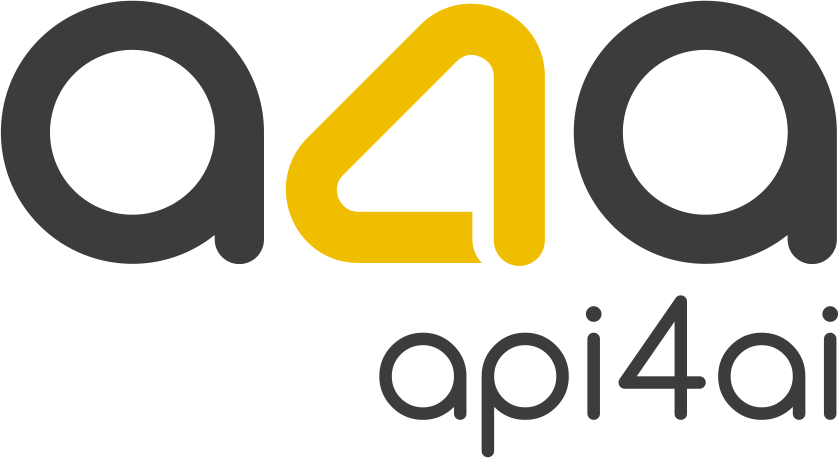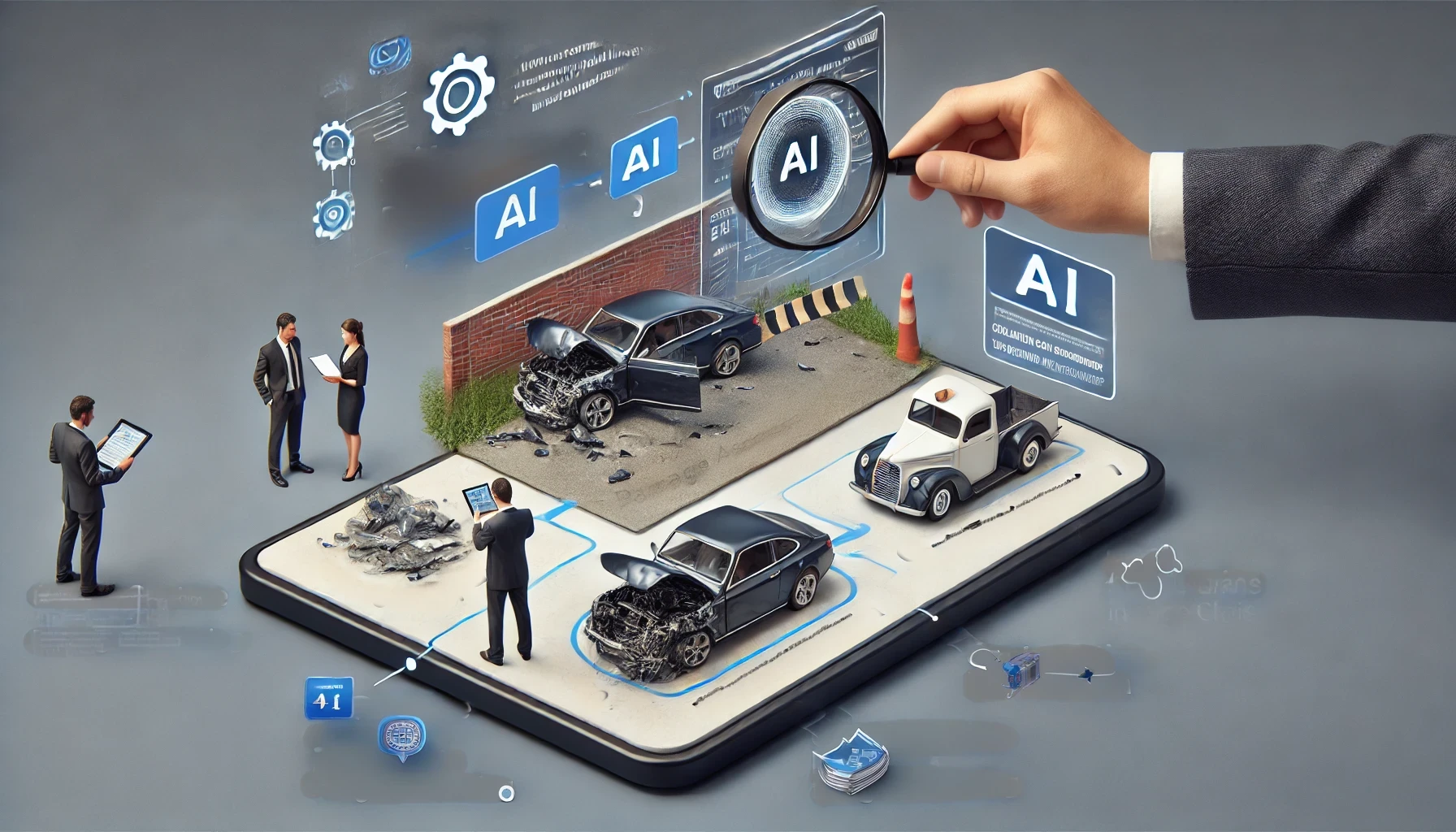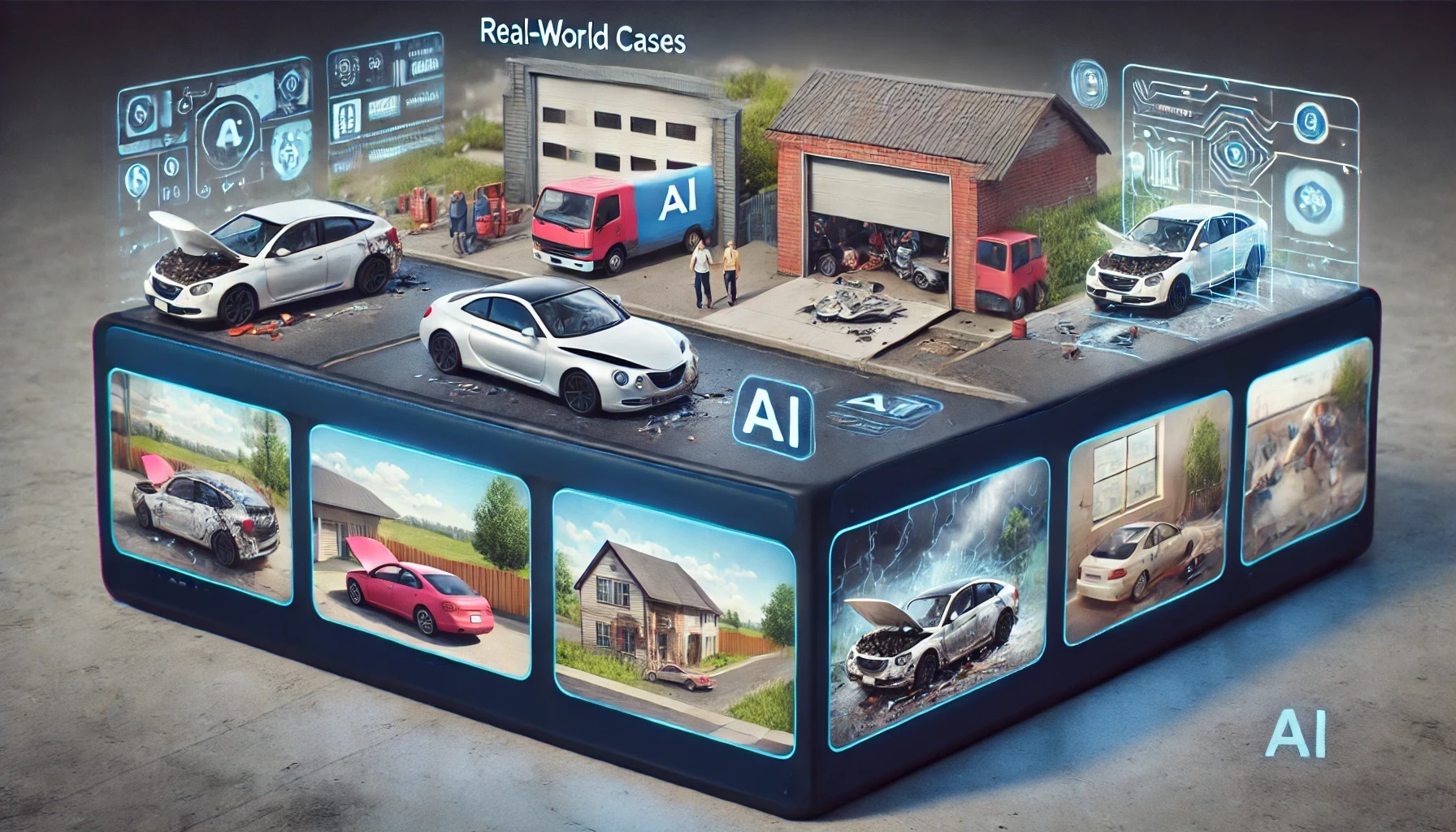AI-Powered Damage Assessment: Revolutionizing Insurance Claims with Image Processing
Introduction
The traditional insurance claims process is often a lengthy, manual endeavor. It typically involves human adjusters performing physical inspections, followed by subjective evaluations of the damage. This method, while standard, can lead to delays and inconsistencies that frustrate both insurers and policyholders. Whether it’s assessing vehicle damage after an accident or inspecting property after a natural disaster, the current process requires significant time and resources, which contributes to rising operational costs and inefficiencies within the industry.
One of the primary challenges facing insurers is the subjectivity and variability inherent in human assessments. Adjusters may interpret the same damage differently, leading to discrepancies in claims evaluations. Additionally, the manual nature of the process is prone to errors and delays, causing longer settlement times and a less-than-optimal customer experience. In an industry where time is of the essence, such bottlenecks can significantly impact client satisfaction and the overall profitability of insurance companies.
AI-powered damage assessment, fueled by advancements in image processing technologies, is emerging as a powerful solution to these challenges. By automating the analysis of images uploaded by claimants, AI-driven systems can evaluate damage faster, more consistently, and at a lower cost. Unlike human adjusters, AI models trained on vast datasets provide accurate assessments without bias, eliminating the need for extensive manual reviews. This not only accelerates the claims process but also ensures a more objective and data-driven approach, leading to quicker settlements and enhanced customer satisfaction.
As insurance companies continue to seek ways to optimize their workflows and reduce costs, AI-powered image processing is revolutionizing how claims are assessed, offering a more efficient and reliable alternative to traditional methods.
Understanding AI-Powered Damage Assessment
AI-powered damage assessment leverages cutting-edge computer vision and image recognition technologies to analyze damage from images, transforming the insurance claims process. Instead of relying on human adjusters to manually inspect and assess damage, AI systems can now process images uploaded by claimants, identifying and categorizing damage with remarkable speed and accuracy. This automated process not only improves efficiency but also reduces human error, delivering consistent results that help streamline insurance workflows.
Key Technologies Involved in AI-Powered Damage Assessment
Image Recognition APIs: Image recognition APIs are at the heart of AI-powered damage assessment. These APIs are designed to automatically identify and classify damage from photographs. For example, they can determine if a car has suffered minor scratches or severe structural damage, or if a home has been impacted by flooding or fire. By rapidly processing images, image recognition APIs enable insurers to evaluate claims much faster than traditional methods.
Machine Learning Models: Machine learning models are trained to recognize specific patterns in images that correlate with various types of damage. These models are continuously refined through exposure to large datasets, allowing them to become increasingly adept at identifying even subtle damage. Machine learning algorithms can also differentiate between different types of damage (e.g., minor cosmetic issues versus major structural damage), ensuring more accurate assessments.
Deep Learning for Enhanced Accuracy: Deep learning, a subset of machine learning, plays a pivotal role in improving the accuracy of damage assessments. As deep learning models are fed more data, they learn to make more precise predictions and classifications. This means that over time, AI-powered damage assessment tools become more reliable and capable of handling a wide range of damage scenarios.
Integration with OCR for Documentation Processing: Another crucial technology integrated into AI-powered damage assessment is Optical Character Recognition (OCR). OCR tools, such as the API4AI OCR API, allow the system to extract text from documents, such as repair estimates or invoices, and automatically incorporate this information into the claims process. This capability enhances the efficiency of processing claims that involve both visual evidence and accompanying documentation, further reducing the time needed for claims resolution.
How AI Models Are Trained for Damage Detection
AI models for damage detection are trained using vast datasets consisting of millions of annotated images of damaged properties, vehicles, and other assets. These images are meticulously labeled to include details about the type, severity, and location of the damage, providing the model with a comprehensive understanding of how to assess a wide variety of real-world scenarios.
For example, training data might include images of vehicles after accidents, categorized by the extent of the damage (minor, severe, or cosmetic). Similarly, images of properties affected by natural disasters, like floods or fires, can be used to teach the AI how to recognize different levels of structural damage. As the models are exposed to more diverse datasets, they learn to make more accurate assessments, helping insurers make data-driven decisions faster and with greater confidence.
In summary, AI-powered damage assessment is reshaping the insurance industry by combining advanced image recognition, machine learning, deep learning, and OCR technologies. This powerful combination allows insurers to process claims more efficiently, delivering faster and more accurate results to their customers.
The Insurance Claims Workflow with AI-Powered Image Processing
AI-powered image processing is revolutionizing the insurance claims workflow by streamlining the process from filing to settlement. The integration of AI technologies, particularly image recognition and machine learning, has made the entire claims procedure faster, more efficient, and less reliant on manual labor. Here's how the workflow is transformed with AI-powered damage assessment:
Simplified Claims Filing
With AI-powered systems, filing an insurance claim has never been easier. Policyholders can now submit claims directly through mobile apps by simply uploading images of the damaged property or vehicle. Gone are the days of lengthy paperwork and back-and-forth with insurance agents. Whether it's a fender bender or storm damage to a home, users can document the damage with a few taps on their smartphone, and the AI system takes over from there. This simplified process not only reduces the time needed to file a claim but also enhances the customer experience by making the process more user-friendly and accessible.
Instant Damage Assessment
One of the most significant advancements brought by AI-powered image processing is real-time damage assessment. As soon as images are uploaded, AI algorithms analyze the visuals instantly, detecting and assessing the extent of the damage. These algorithms are trained on millions of images, allowing them to evaluate different types of damage, from minor scratches to major structural issues. By leveraging AI for instant analysis, insurers can drastically cut down on the time required to process claims, providing policyholders with immediate feedback on their claim status.
Claims Adjusters’ Role is Transformed
AI-powered damage assessment doesn't eliminate the need for claims adjusters—it transforms their role. While the AI system provides a preliminary analysis of the damage, adjusters can focus their attention on more complex and nuanced cases that require human judgment. Rather than spending time on routine or straightforward claims, adjusters can allocate their expertise where it's needed most. This shift not only increases the overall efficiency of the claims department but also ensures that more intricate cases are handled with greater care.
Faster Claim Resolutions
The integration of AI-powered image processing leads to faster claim resolutions by minimizing the need for on-site inspections. In many cases, the AI system can provide an accurate assessment of the damage based solely on images, allowing the insurer to settle the claim quickly. This speed is a game-changer for policyholders, who no longer have to wait weeks for adjusters to visit the site, conduct inspections, and finalize reports. As a result, claims are processed more swiftly, enhancing customer satisfaction and improving the overall efficiency of the claims process.
Integration with Existing Insurance Platforms
AI-powered damage assessment tools are designed to integrate seamlessly with existing insurance platforms. APIs for image recognition and damage analysis can be embedded into the insurer’s current software, automating key steps of the claims process. For example, damage reports that were once manually compiled by adjusters can now be generated automatically by AI, complete with visual evidence and assessment data. This integration not only accelerates the workflow but also reduces the risk of human error, ensuring a more consistent and reliable claims process.
In conclusion, AI-powered image processing is transforming the insurance claims workflow by simplifying claims filing, providing instant damage assessments, enhancing the role of claims adjusters, and speeding up claim resolutions. With seamless integration into existing platforms, AI-driven damage assessment is helping insurers deliver faster, more accurate, and more efficient service to their customers.
Advantages of AI-Powered Damage Assessment
The integration of AI-powered damage assessment in the insurance industry is delivering significant benefits, reshaping how claims are processed, evaluated, and resolved. By leveraging advanced image processing technologies, insurers can streamline their operations while providing faster, more accurate service to their customers. Here are the key advantages of using AI for damage assessment:
Speed and Efficiency
One of the most compelling advantages of AI-powered damage assessment is its unparalleled speed and efficiency. AI systems can process thousands of images in just minutes, a task that would take human adjusters days or even weeks to complete. This rapid analysis drastically reduces the time it takes to evaluate claims, allowing insurers to deliver faster decisions and settlements. For policyholders, this means quicker responses and less time waiting for their claims to be processed, ultimately enhancing the overall claims experience.
Consistency and Accuracy
AI-powered damage assessment eliminates human bias and subjectivity from the evaluation process, ensuring more consistent and accurate results. Human adjusters may have varying interpretations of damage based on their experience, personal judgment, or external factors, leading to discrepancies in claims evaluations. In contrast, AI models are trained on diverse datasets, enabling them to recognize damage under various conditions with a high degree of accuracy. By applying the same standards to every claim, AI ensures that policyholders receive fair and objective assessments every time.
Cost Savings for Insurers
AI-powered damage assessment offers significant cost-saving opportunities for insurance companies. By automating the claims evaluation process, insurers can reduce the need for a large workforce of claims adjusters, cutting down on labor costs. Additionally, the increased efficiency of AI-driven systems minimizes the time and resources spent on claims processing, further lowering operational costs. These savings can be passed on to policyholders in the form of reduced premiums, while also improving the profitability of the insurer.
Enhanced Customer Experience
A faster, more efficient claims process naturally leads to an improved customer experience. Policyholders no longer have to wait weeks for a claim to be reviewed and settled. With AI-powered systems, they can receive instant feedback, faster resolutions, and quicker settlements, which boosts satisfaction and builds trust between the insurer and the customer. By offering a more seamless and responsive claims process, insurers can differentiate themselves in a competitive market, improving customer retention and attracting new clients.
Data-Driven Decision-Making
AI-powered damage assessment doesn’t just improve the speed and accuracy of claims processing; it also enables more data-driven decision-making. By analyzing large volumes of data, insurers gain valuable insights that can inform underwriting decisions, risk assessments, and fraud detection efforts. AI systems continuously learn from new data, making them more adept at identifying patterns and trends over time. This wealth of information empowers insurers to make more informed decisions, improving their overall business performance while offering more personalized policies to customers.
In summary, AI-powered damage assessment offers numerous advantages, from significantly improving speed and accuracy to driving cost savings and enhancing the customer experience. With AI tools, insurers can deliver faster, fairer, and more efficient claims processing, while also gaining access to valuable data that can enhance their decision-making capabilities.
Real-World Use Cases of AI-Powered Damage Assessment
AI-powered damage assessment is already making a significant impact across various sectors of the insurance industry. By leveraging advanced image recognition and machine learning technologies, insurers can quickly assess and process claims, enhancing efficiency and improving customer satisfaction. Here are some real-world use cases of AI-powered damage assessment in action:
Automotive Insurance
In the world of automotive insurance, AI-powered damage assessment is transforming how accident claims are handled. After a vehicle accident, policyholders can simply upload photos of the damaged car through a mobile app. AI algorithms then analyze the images, detecting and categorizing the type and severity of damage. These systems are trained to recognize various types of automotive damage, from minor scratches and dents to more severe structural damage. By instantly processing these images, AI can provide insurers with an accurate assessment in minutes, reducing the need for manual inspections and speeding up claim resolutions. This not only enhances efficiency for insurers but also delivers a faster, more satisfying experience for customers.
Property Insurance
AI-powered damage assessment is also proving invaluable in the realm of property insurance, especially when it comes to assessing damage caused by natural disasters like floods, fires, and storms. When homes or businesses are damaged, time is of the essence for policyholders seeking to recover and rebuild. AI systems can quickly analyze images of the damaged property, assessing the extent of the destruction and categorizing it by severity. Whether it’s water damage from a flood or structural damage from a hurricane, AI helps expedite the recovery process by providing insurers with immediate insights. This real-time analysis allows insurers to make faster decisions, settle claims quickly, and provide much-needed support to policyholders in crisis situations.
Health Insurance
In health insurance, AI-powered damage assessment is being used to evaluate medical claims based on images, particularly in cases involving injuries from accidents. For example, after an accident, policyholders may submit photographs or medical scans of injuries. AI models trained on medical imagery can analyze these visuals to assess the severity of the injury, enabling faster claim approvals. Whether it's evaluating the extent of a broken bone or identifying soft tissue damage from an accident, AI helps health insurers process claims more efficiently. This results in quicker claim resolutions, allowing patients to receive the medical care they need without delays, while also reducing administrative burdens for insurers.
These real-world applications of AI-powered damage assessment demonstrate how the technology is reshaping insurance claims processes across multiple industries. Whether in automotive, property, or health insurance, AI is enabling insurers to process claims faster, with greater accuracy, and at a lower cost, providing a better overall experience for both insurers and policyholders.
Overcoming Challenges with AI in Damage Assessment
While AI-powered damage assessment is revolutionizing the insurance industry, there are several challenges that insurers must address to fully realize its potential. These challenges include dealing with image quality, handling edge cases, ensuring privacy and security, and adhering to regulatory and ethical standards. Here's how AI solutions overcome these obstacles:
Dealing with Image Quality Issues
One of the primary challenges in AI-powered damage assessment is the quality of the images provided by policyholders. Low-quality or unclear images, such as those taken in poor lighting or with shaky hands, can make it difficult for AI models to accurately assess damage. However, modern AI systems are increasingly sophisticated, capable of processing and improving image quality using techniques like image enhancement and noise reduction. Additionally, AI can flag images that are too blurry or inadequate for analysis, prompting users to upload clearer photos. By requesting better images or using advanced image processing techniques, AI ensures accurate assessments even in suboptimal conditions.
Addressing Edge Cases and Anomalies
While AI-powered damage assessment is highly accurate, it can still encounter edge cases or anomalies—situations where the damage is too complex or unique for the model to handle with confidence. In these instances, AI systems are designed to recognize their limitations and escalate the case for human review. For example, if the damage is unusually severe or involves multiple factors that fall outside the AI’s training data, the system can flag the case for further evaluation by a claims adjuster. This ensures that while AI handles the bulk of routine assessments, complex or ambiguous cases still receive the necessary human expertise, maintaining accuracy and fairness in the claims process.
Privacy and Security Concerns
When using AI-powered technologies, privacy and security are critical concerns for both insurers and policyholders. The processing of sensitive data, including personal photos and documentation, requires stringent safeguards to protect against unauthorized access and data breaches. Insurers must implement robust encryption and data protection protocols to ensure that customer information is secure throughout the claims process. Additionally, compliance with data privacy regulations, such as the General Data Protection Regulation (GDPR) and other local laws, is essential. By prioritizing data privacy and security, insurers can build trust with their customers while leveraging AI to streamline damage assessments.
Regulatory and Ethical Considerations
AI-powered damage assessment also raises important regulatory and ethical considerations. Insurers must ensure that their AI systems comply with industry regulations, including transparency in how claims are evaluated and decisions are made. AI models should be designed to provide clear, explainable results, ensuring policyholders understand how their claims are assessed. Additionally, ethical concerns around AI, such as the potential for bias in damage assessments, must be addressed by training AI models on diverse datasets that represent a wide range of scenarios. This helps mitigate the risk of biased outcomes and ensures that AI assessments are fair, accurate, and aligned with industry standards.
By addressing these challenges—image quality, edge cases, privacy concerns, and regulatory requirements—AI-powered damage assessment can deliver reliable, efficient, and secure claims processing. Insurers who successfully navigate these hurdles will not only improve their internal workflows but also enhance customer trust and satisfaction in an increasingly digital insurance landscape.
The Future of AI in Insurance Claims
The future of AI in the insurance industry holds immense potential, with advancements in predictive analytics, integration with the Internet of Things (IoT), fraud detection, and the prospect of fully automated claims processing. As AI technologies continue to evolve, they are poised to revolutionize not just damage assessment but the entire insurance ecosystem, driving greater efficiency, accuracy, and customer satisfaction.
AI Advancements: Predictive Analytics for Claims Prevention
One of the most exciting developments in AI is the use of predictive analytics to prevent claims before they happen. By analyzing historical data and identifying patterns, AI can predict potential risk factors and accidents. For example, in automotive insurance, AI models can assess driving behavior and environmental conditions to alert policyholders about high-risk situations that could lead to accidents. Similarly, in property insurance, AI can analyze factors such as weather patterns and structural vulnerabilities to warn homeowners of impending risks like floods or fires. This proactive approach helps insurers mitigate risks, reduce claim volumes, and ultimately lower costs for both the company and the policyholder.
Integration with IoT (Internet of Things)
The integration of AI with the Internet of Things (IoT) is another key area shaping the future of insurance claims. IoT devices, such as sensors installed in homes or vehicles, can provide real-time data to insurers, enabling them to monitor conditions and detect potential damage as it occurs. For instance, smart home sensors can alert insurance companies to leaks, fires, or break-ins, while connected cars can report real-time driving data and accident reports. When combined with AI-powered image processing, this real-time data allows insurers to quickly assess and address issues, potentially resolving claims before the policyholder even files them. The integration of IoT and AI will help insurers offer more personalized and responsive services, enhancing customer experiences while reducing risks.
Expanding AI to Fraud Detection
As insurance fraud remains a significant concern for insurers, AI is increasingly being used to detect fraudulent claims. AI-powered image analysis plays a crucial role in identifying discrepancies between reported damage and visual evidence, flagging potentially fraudulent claims for further investigation. By cross-referencing image data with historical claims patterns, AI can quickly spot anomalies, such as digitally altered images or staged accidents. This capability helps insurers reduce fraud-related losses and ensures that genuine claims are processed more swiftly. As AI continues to improve, its ability to detect and prevent fraud will only become more sophisticated, safeguarding both insurers and policyholders.
AI as a Trusted Partner: Fully Automated Insurance Claims Processing
The future of insurance claims is moving toward fully automated processing with minimal human intervention. As AI-powered systems become more advanced, they will be able to handle the entire claims lifecycle, from initial filing to final settlement, with little to no human oversight. Policyholders will be able to submit images and data through mobile apps, and AI algorithms will instantly assess the damage, verify coverage, and approve claims. While human adjusters will still play a role in handling complex or edge cases, the majority of claims will be processed by AI systems, enabling insurers to offer faster, more efficient service. As AI becomes a trusted partner in the claims process, insurers will see improved accuracy, reduced costs, and enhanced customer satisfaction.
The future of AI in insurance is bright, with innovations like predictive analytics, IoT integration, fraud detection, and automation set to redefine how claims are processed. As insurers embrace these advancements, they will unlock new opportunities to improve risk management, streamline operations, and provide more personalized services to their customers. AI-powered damage assessment is just the beginning of a broader transformation that will revolutionize the insurance industry in the years to come.
Conclusion
AI-powered damage assessment is revolutionizing the insurance industry, offering numerous benefits that include faster, more accurate, and cost-effective claims processing. By leveraging cutting-edge image recognition and machine learning technologies, insurers can streamline their workflows, reduce operational costs, and enhance customer satisfaction. AI eliminates the inefficiencies of traditional claims processes, ensuring that assessments are consistent, objective, and data-driven. This technology is a game-changer for insurers looking to stay competitive in an increasingly digital landscape.
Now is the time for insurers to embrace AI-powered technologies. By adopting AI-driven damage assessment solutions, insurance companies can improve their service offerings, expedite claim settlements, and deliver a seamless experience for policyholders. Those who invest in AI today will be well-positioned to lead the industry tomorrow, setting new standards for speed, accuracy, and customer care.
Looking ahead, AI will continue to play a critical role in modernizing the insurance industry. As advancements in predictive analytics, IoT integration, and fraud detection emerge, AI will drive even greater innovation, enabling fully automated claims processing and reshaping how insurers manage risk and serve their customers. The future of insurance is AI-powered, and forward-thinking insurers who embrace this transformation will be at the forefront of a new era in claims management.






